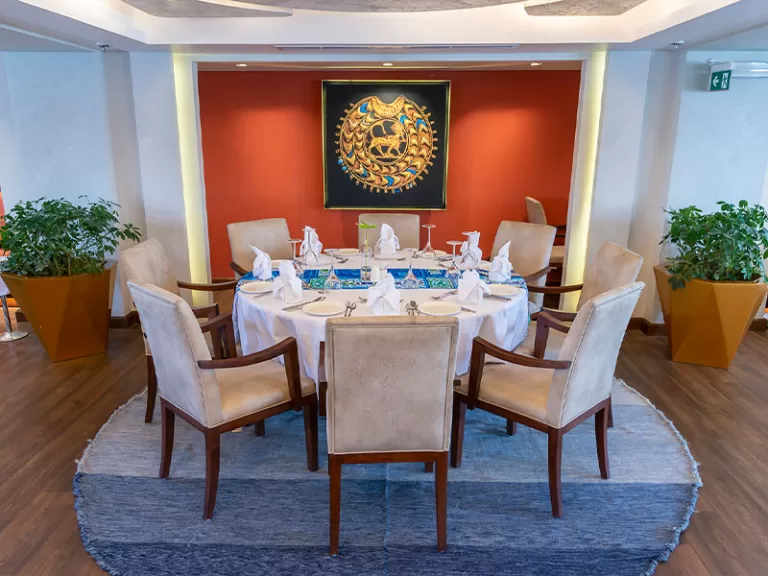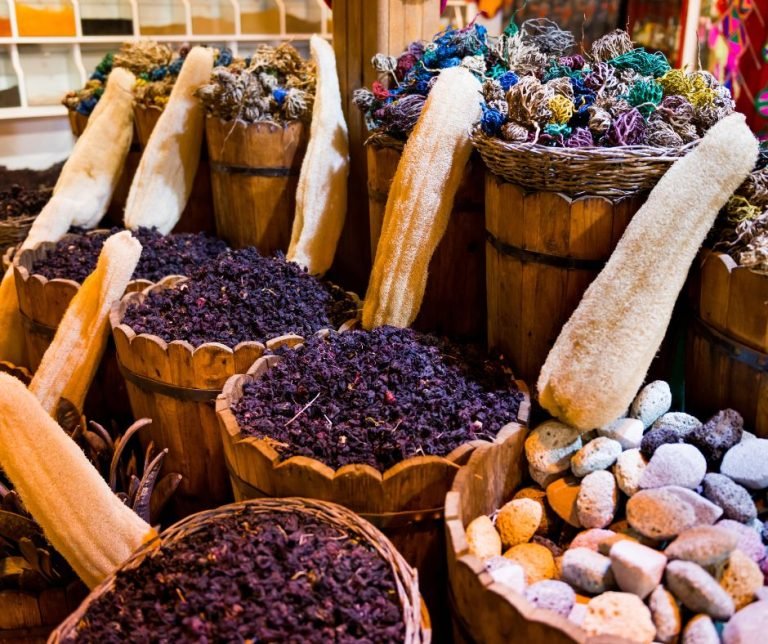
Home » Weekly Blog » A Culinary Journey Through Egypt: Must-Try Food Items
A Culinary Journey Through Egypt: Must-Try Food Items
Table of Contents
Introduction
Egypt, a land of ancient wonders and vibrant culture, offers not only a feast for the eyes but also a culinary adventure for the taste buds. Egyptian cuisine is a delightful amalgamation of flavors influenced by its rich history and geographical diversity. From the bustling streets of Cairo to the serene banks of the Nile, every corner of Egypt offers a unique gastronomic experience. In this blog post, we’ll explore the top food items that you simply must try while visiting Egypt, each dish telling a story of tradition, community, and the love for good food.

Koshari - The National Dish
One cannot truly experience Egyptian cuisine without indulging in Koshari, the beloved national dish of Egypt. Koshari is a hearty and comforting street food, found in every nook and cranny of Egyptian cities. This dish is a delightful mix of rice, lentils, pasta, and chickpeas, topped with a tangy tomato sauce, crispy fried onions, and a drizzle of garlic vinegar.
Koshari is more than just a meal; it’s a reflection of Egypt’s culinary heritage, combining elements from different cultures that have influenced the region over centuries. Each bite offers a complex interplay of textures and flavors, from the softness of the lentils and rice to the crunch of the onions. It’s a dish that perfectly encapsulates the essence of Egyptian street food – affordable, filling, and incredibly flavorful. When in Egypt, make sure to savor a bowl of Koshari from a local vendor, preferably while standing in a crowded market, to fully immerse yourself in the experience.
Ful Medames - A Staple Breakfast
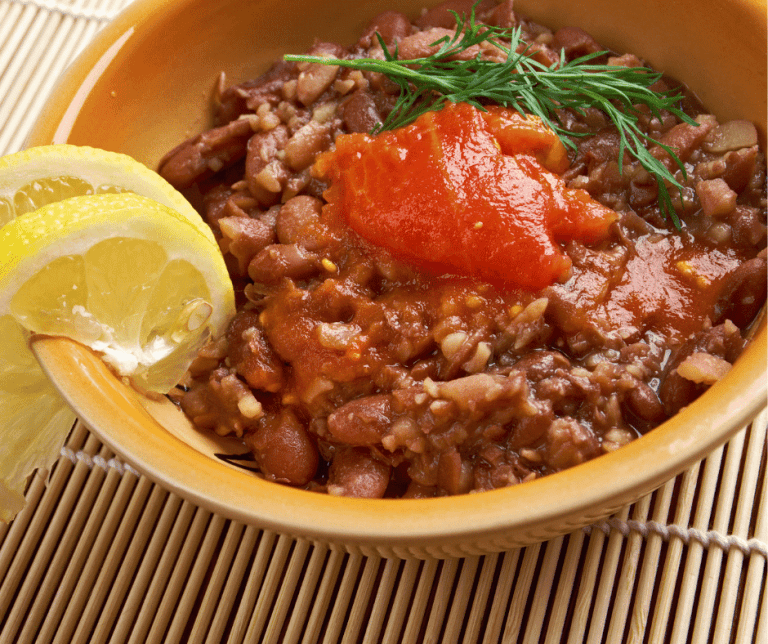
No Egyptian breakfast is complete without Ful Medames, a dish that has been a staple in Egyptian households for centuries. Ful Medames, commonly known as “Ful,” is a simple yet nourishing dish made from slow-cooked fava beans. The beans are simmered until they are tender and then seasoned with garlic, lemon juice, olive oil, and a blend of spices that vary from family to family.
Ful is often served with an array of accompaniments such as chopped tomatoes, onions, parsley, boiled eggs, and pita bread. The dish is not just about the fava beans; it’s about the combination of flavors and textures from the toppings that make each bite unique. This communal dish is usually enjoyed with friends and family, emphasizing the importance of sharing and togetherness in Egyptian culture.
Eating Ful Medames in Egypt is an experience in itself. Whether you enjoy it at a traditional Egyptian café or a street vendor’s cart, you’ll find that the simplicity of the dish belies its rich, hearty flavor. It’s the kind of breakfast that not only fills your stomach but also warms your soul, making it a must-try when you’re exploring the culinary landscape of Egypt.
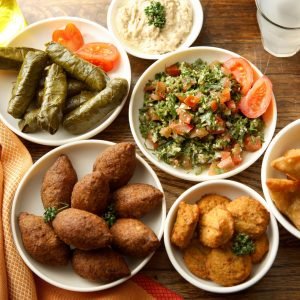
Egyptian Mezze
A meal in Egypt is often an elaborate affair, and nothing exemplifies this better than the Egyptian mezze. Mezze refers to a collection of small dishes served as appetizers, perfect for sharing and tasting a variety of flavors. This tradition of communal dining showcases the hospitality and generosity inherent in Egyptian culture.
Egyptian mezze includes a plethora of delicious items, each bursting with unique flavors. Hummus, a creamy blend of chickpeas, tahini, lemon juice, and garlic, is a staple. Baba Ghanoush, made from roasted eggplant, tahini, and spices, offers a smoky, rich taste. Another favorite is Tahini, a simple yet flavorful dip made from ground sesame seeds. These dishes are often accompanied by freshly baked pita bread, perfect for scooping and savoring every bite.
Falafel, deep-fried balls made from ground chickpeas or fava beans mixed with herbs and spices, is another highlight of the mezze spread. These crunchy, flavorful bites are enjoyed with a side of tahini sauce or a fresh salad. Dolma, grape leaves stuffed with a mixture of rice, herbs, and sometimes meat, adds to the variety and richness of the mezze experience.
Enjoying mezze in Egypt means more than just tasting delicious food; it’s about engaging in the local way of life. Mezze is typically served in both restaurants and homes, where you can experience the warmth of Egyptian hospitality. The act of sharing these small plates fosters a sense of community and connection, making it an essential part of your culinary journey in Egypt.
Shawarma and Kebabs
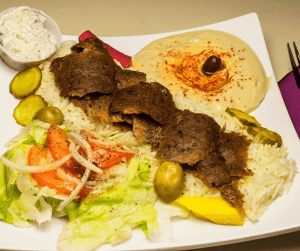
When it comes to street food in Egypt, shawarma and kebabs reign supreme. These dishes, with their tantalizing aromas and mouthwatering flavors, are staples of Egyptian street food culture. Shawarma, thinly sliced meat cooked on a rotating vertical spit, is often made with chicken, lamb, or beef, marinated in a mixture of spices, garlic, and vinegar.
Shawarma is typically served in a warm pita bread or flatbread, accompanied by a variety of toppings such as tahini sauce, garlic sauce, pickles, tomatoes, and onions. The combination of the juicy, flavorful meat with the fresh and tangy toppings creates a symphony of flavors that is hard to resist. Every bite is a delightful explosion of taste, making shawarma a favorite among locals and tourists alike.
Kebabs, on the other hand, offer a different yet equally delicious experience. Made from skewered and grilled pieces of meat, kebabs can be found in numerous varieties throughout Egypt. Lamb, beef, and chicken kebabs are the most popular, often marinated in a mixture of yogurt, lemon juice, and spices to enhance their flavor and tenderness.
Kebabs are usually served with a side of rice, salad, and flatbread, making for a hearty and satisfying meal. The smoky, char-grilled flavor of the kebabs is a testament to the traditional grilling techniques passed down through generations.
Both shawarma and kebabs can be found in street stalls and restaurants across Egypt, offering a quick and delicious meal on the go. Whether you’re wandering the streets of Cairo or relaxing in a local eatery, indulging in shawarma and kebabs is an essential part of the Egyptian culinary experience.
Desserts - Sweet Treats of Egypt
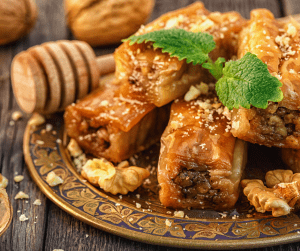
Egyptian cuisine is renowned for its indulgent desserts, each one a celebration of sweetness and rich flavors. These desserts are not just a treat for the taste buds but also a reflection of Egypt’s rich culinary traditions and history.
Baklava, one of the most famous desserts, consists of layers of flaky pastry filled with chopped nuts and sweetened with honey or syrup. Each bite offers a delightful crunch, followed by the sweetness of the syrup and the rich, nutty filling. Baklava is often enjoyed with a cup of Egyptian coffee, making for a perfect end to a meal.
Another popular dessert is Basbousa, a semolina cake soaked in sweet syrup. The cake is often flavored with coconut and topped with almonds, providing a delightful texture and taste. Basbousa is a common sight in Egyptian households and pastry shops, enjoyed during special occasions and everyday moments alike.
Kunafa is another traditional dessert that should not be missed. This sweet treat is made from thin, noodle-like pastry or shredded phyllo dough, layered with a creamy filling of cheese or clotted cream, and soaked in a fragrant sugar syrup. The combination of the crispy pastry and the creamy filling creates a unique and irresistible dessert that is loved by many.
Egyptian desserts often use simple ingredients like honey, nuts, and semolina, yet the results are nothing short of spectacular. They are a testament to the creativity and skill of Egyptian pastry chefs and home cooks alike. Sampling these sweet treats is a must for anyone with a sweet tooth, providing a perfect conclusion to a culinary journey through Egypt.
Fresh Juices and Beverages

In the heat of Egypt, refreshing beverages are essential, and the country offers an array of delicious fresh juices and drinks that perfectly complement its rich cuisine. These beverages are not only refreshing but also a testament to the abundance of fresh produce available in Egypt.
One of the most popular drinks is sugarcane juice, known locally as “asab.” Extracted from freshly pressed sugarcane stalks, this sweet and invigorating drink is a common sight in street stalls and markets. The juice is served cold, providing a quick and natural energy boost, especially appreciated during the hot summer months.
Karkade, or hibiscus tea, is another beloved beverage in Egypt. Made from dried hibiscus petals, this ruby-red drink can be enjoyed either hot or cold. It has a tart, cranberry-like flavor and is often sweetened to balance its natural tanginess. Karkade is not only delicious but also known for its health benefits, including its rich antioxidant content and potential to lower blood pressure.
Mango juice is a favorite among locals and tourists alike, thanks to Egypt’s bountiful mango harvest. Freshly squeezed mango juice is thick, sweet, and bursting with tropical flavor. Many cafes and juice bars offer this vibrant drink, making it a must-try during your visit.
Additionally, tamarind juice, or “tamar hindi,” is a popular traditional beverage. This drink, made from the pulp of tamarind pods, has a unique sweet and sour flavor. It’s often served chilled and is particularly popular during Ramadan, offering a refreshing break during the fast.
Exploring the variety of fresh juices and beverages in Egypt is a delightful way to experience the country’s agricultural richness and culinary creativity. Whether you’re sipping on a cool glass of sugarcane juice or enjoying a cup of hibiscus tea, these drinks provide a refreshing respite and a deeper connection to Egypt’s natural bounty.
Egyptian Coffee and Tea
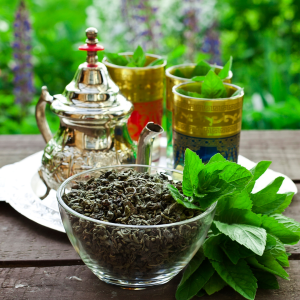
In Egypt, coffee and tea are more than just beverages; they are integral to the social fabric and daily life. The traditions surrounding these drinks offer a glimpse into the heart of Egyptian culture, where hospitality and social interaction are deeply valued.
Egyptian coffee, known locally as “Ahwa,” is a staple in Egyptian cafés, or “ahwahs.” This strong, aromatic coffee is typically brewed with finely ground coffee beans, sugar, and sometimes cardamom, then boiled in a special pot called a “cezve.” Served in small, delicate cups, Egyptian coffee is meant to be sipped slowly, often accompanied by lively conversations and relaxed socializing. The preparation and enjoyment of Ahwa reflect the leisurely pace of life in these traditional coffeehouses, where people gather to chat, play games, and enjoy each other’s company.
Tea, or “Shay,” is equally beloved in Egypt, often enjoyed multiple times a day. Egyptian tea comes in two main varieties: “Koshary” tea, a strong black tea usually sweetened and sometimes flavored with fresh mint, and “Sa’idi” tea, a much stronger, darker brew favored in Upper Egypt. Shay is commonly served in small glasses rather than cups, and its preparation and presentation are considered an art form in many households and cafes.
Both coffee and tea are often enjoyed with a side of traditional sweets, enhancing the experience. Whether you’re indulging in a piece of baklava with your Ahwa or savoring a date-filled biscuit with your Shay, these beverages offer a perfect pairing to Egyptian desserts.
Experiencing Egyptian coffee and tea is about more than just tasting the drinks; it’s about immersing yourself in the cultural rituals that accompany them. Whether you find yourself in a bustling Cairo café or a quiet village home, taking the time to enjoy Ahwa and Shay will give you a deeper appreciation for Egypt’s rich traditions and warm hospitality.
Conclusion
Egyptian cuisine is a vibrant tapestry of flavors, textures, and traditions, offering a culinary journey that is both rich and diverse. From hearty street foods like Koshari and Shawarma to the delicate sweetness of Baklava and Kunafa, every dish tells a story of Egypt’s cultural heritage and love for food. The refreshing juices, aromatic coffees, and soothing teas add another layer to this delightful experience, making your visit to Egypt a memorable gastronomic adventure.
Whether you’re a seasoned traveler or a first-time visitor, indulging in these must-try Egyptian food items will not only satisfy your taste buds but also connect you to the heart and soul of this ancient land. So, embrace the flavors, savor the aromas, and enjoy the culinary treasures that Egypt has to offer.
















